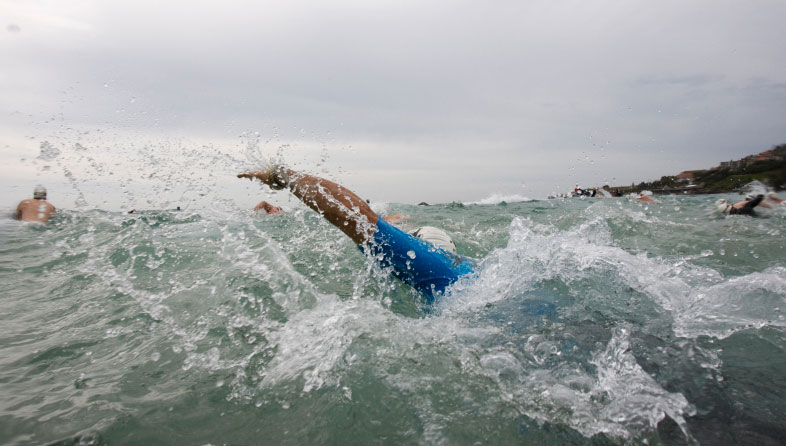 Written by Karen Kovacs, PT, OCS, USAT Level 1 Coach —
Written by Karen Kovacs, PT, OCS, USAT Level 1 Coach —
No doubt, you’ve logged some serious laps in the pool.
You have a very good idea of the time it will take to swim a mile, two miles and to finish the event if conditions are ideal: no waves, minimal current, and perfect temperature.
But since perfect conditions rarely exist, be sure you’ve thought through how you will manage your anxiety if things are not perfect. Now is the time to think about the details that will enhance your experience.
Determine how you are getting to the starting point and how long will it take you to drive there. Build in a buffer of time so that you are not rushing.
How will you get your dry clothes to the finish? Have you communicated all of this and made the same plans with your safety kayaker?
If you are wearing a wetsuit, make sure it fits properly and you know how it will feel to swim in it. Decide what you are wearing underneath and what you will use to keep from chafing.
Make certain your goggles are in good shape or get a new pair now to get them adjusted just right.
Have a bright colored swim cap to make it easy for your safety kayaker to spot you. Practice swimming in that cap to make sure you don’t get a headache from it being too tight.
Decide now if you will have a water bottle or any nutrition (gels) in your safety kayak. Be sure you practice “eating” and drinking while treading water if you plan to consume anything during the swim. You don’t want to get an upset stomach because you didn’t test out what you plan to eat or drink.
Think about how will you settle in to the swim pace that you have been practicing. Do you expect to breathe every stroke or alternate sides?
Be sure you know how often you will sight to keep on course.
Anticipate how you will determine the impact of the tide, current, wind, and waves on the line you swim. Decide how far away will your safety kayak will be and on which side of you.
Remember that wind will affect the kayaker, too.
Have a plan and stick to that plan to minimize stress on the day of the event.
Swim the pace you have been practicing. Don’t start out too fast.
The more details you have thought through, the less hectic you will feel getting into the water and finding your rhythm.
Plan your swim. Swim your plan.
Karen Kovacs, PT, OCS is a physical therapist and clinical director of Tidewater Physical Therapy‘s Gloucester Point location. She is an accomplished endurance athlete and is a USAT Level 1 Coach.

